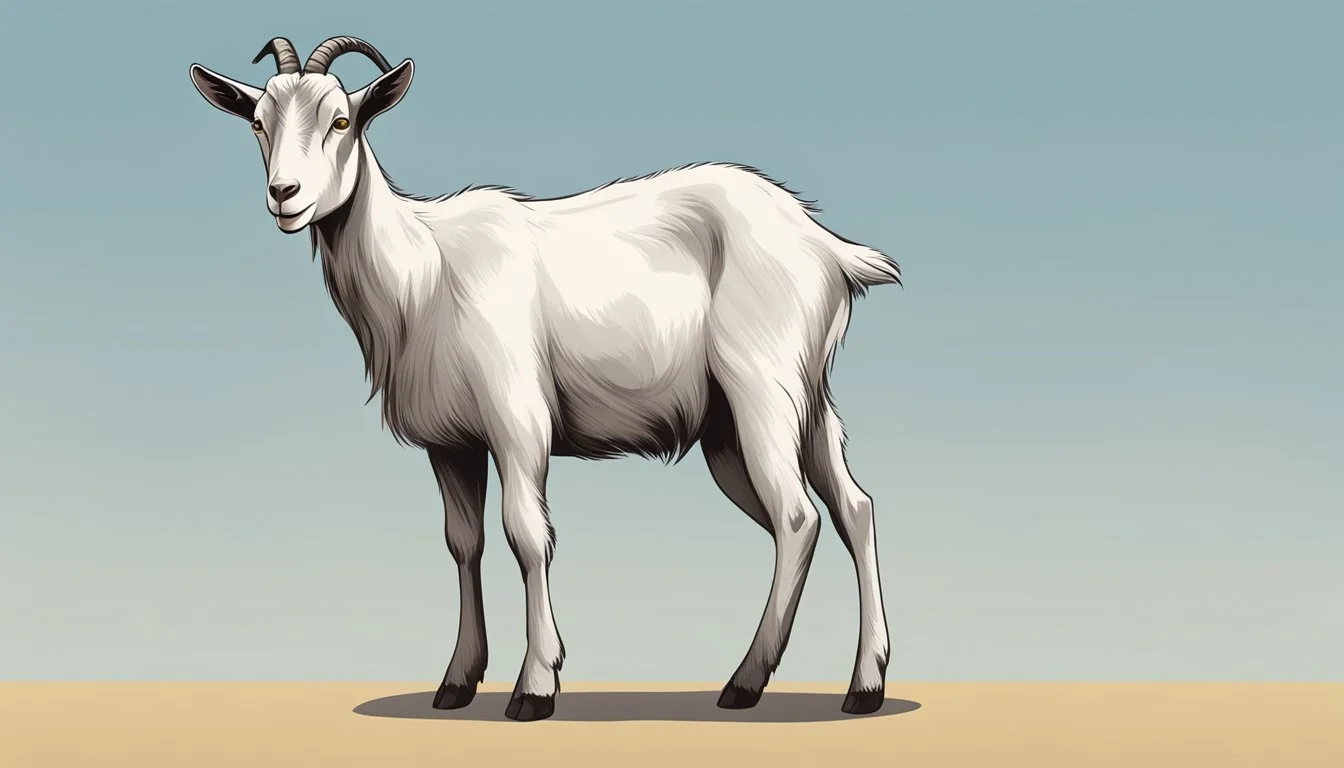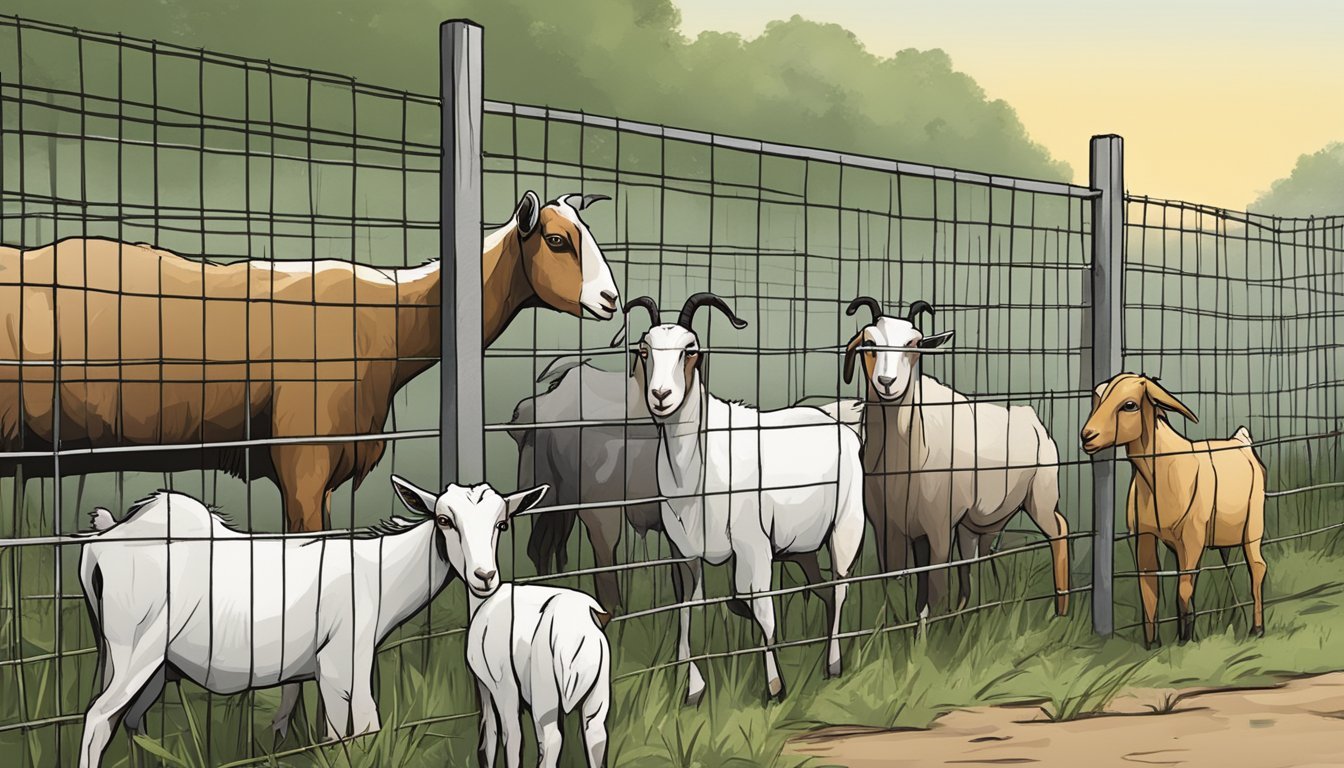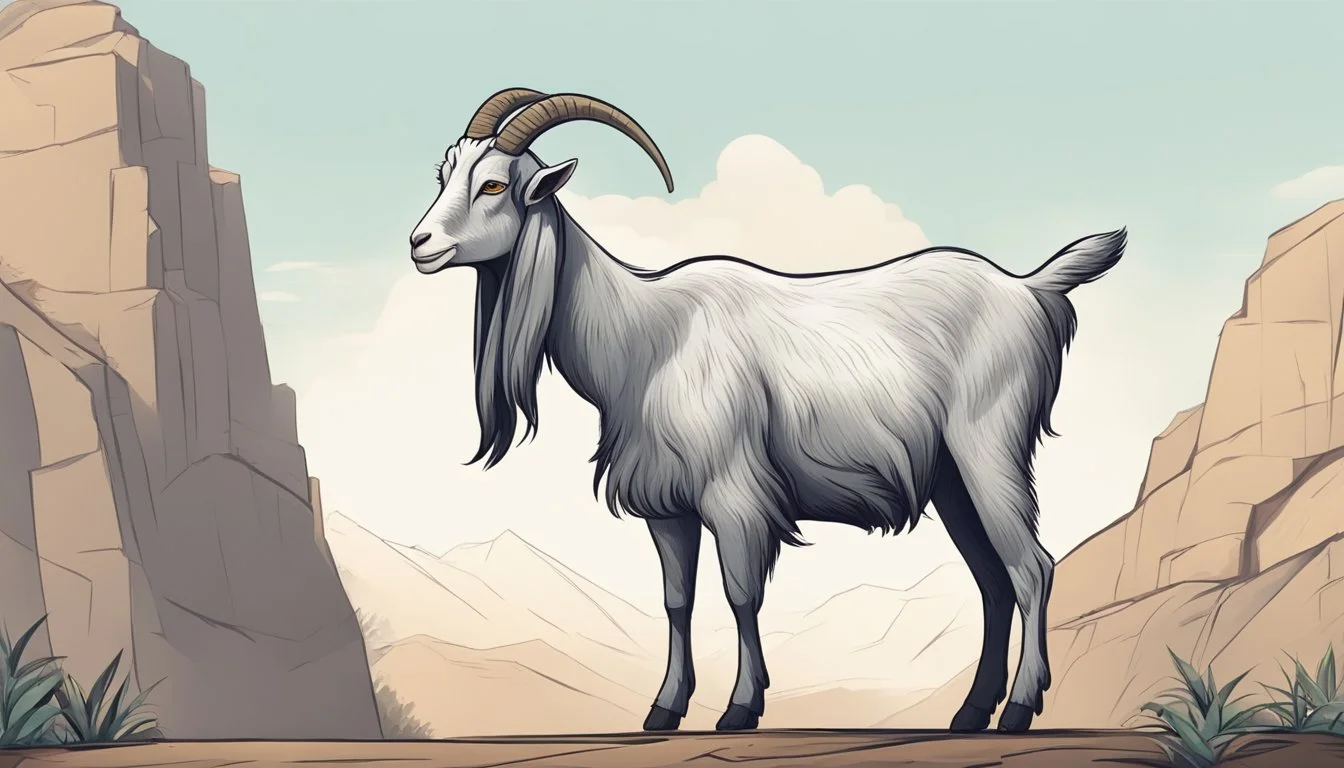How do I Recognize if a Goat is Sick
Identifying Key Symptoms
Goats are generally robust animals, but like any other living creature, they are prone to sickness. Recognizing the signs of illness in goats is essential for timely treatment and recovery. Visible indicators such as a change in behavior or physical symptoms are often the first clues that a goat may not be feeling well. Lethargy, lack of appetite, or abnormal vocalizations can all be early signals of health issues. Physical signs might include a runny nose, coughing, diarrhea, or unusual discharge which could indicate various ailments from respiratory infections to digestive troubles.
Careful observation is key to maintaining good health in a goat herd. A healthy goat is typically energetic and curious, with a good appetite and a shiny coat. In contrast, signs of a sick goat may also include more subtle behaviors such as isolating from the herd, grinding their teeth, or exhibiting a hunched posture, which might suggest discomfort or pain. It is imperative for goat owners to be familiar with their animals' normal demeanor and physiological state to detect deviations that warrant attention.
Treatment for a sick goat will depend on the specific diagnosis, which can often be deduced from the presenting symptoms. For instance, a goat demonstrating neurological symptoms such as convulsions might be suffering from a serious condition like enterotoxemia, which is fast-acting and potentially fatal. In such cases, swift veterinary intervention is critical. On the other hand, issues such as mineral deficiencies can be addressed through dietary adjustments and supplements to prevent the occurrence of more serious health problems.
Signs of Illness in Goats
Recognizing the signs of illness in goats is critical for prompt treatment and recovery. This section focuses on behavioral changes, physical symptoms, and appetite and digestive issues that indicate a sick goat.
Behavioral Changes
Goats typically exhibit vibrant and alert behaviors. Any deviation from this, such as depression or lethargy, can be a sign of illness. A sick goat may show a lack of interest in activities, appear weak, have droopy ears, and might not respond to stimuli as usual. Also, signs like tremors or convulsions can be indicative of serious health problems and require immediate attention.
Physical Symptoms
Physical signs of illness in goats can be evident through their appearance and vital signs. Anemia may be identified by pale gums, while dehydration can be tested by pinching the skin for elasticity. Abnormal breathing, persistent cough, or a runny nose suggest respiratory issues. Moreover, a goat's normal temperature should range between 101.5°F to 103.5°F, and any major fluctuations could be a cause for concern.
Appetite and Digestive Issues
Changes in eating habits are often the first clue to a potential illness. A decrease in appetite, weight loss, or changes in drinking habits signify health issues. Diarrhea or changes in fecal matter consistency can be an indicator of digestive problems, signaling infections or parasitic infestations. If the goat experiences abdominal pain, exhibits bloating, or has blood in its stool, these are serious symptoms that require immediate veterinary care.
Common Goat Diseases and Health Problems
Goat owners must be vigilant in monitoring their herds for signs of illness, as early detection and treatment are crucial for the well-being of goats. This section explores various ailments that commonly affect goats, ranging from respiratory issues to systemic infections.
Respiratory Diseases
Pneumonia is a prevalent respiratory problem in goats often caused by bacteria or viruses, leading to coughing, nasal discharge, and labored breathing. It is essential for owners to provide good ventilation and consider vaccination strategies against pneumonia.
Digestive Disorders
Bloat or gastrointestinal problems are common among goats, with symptoms including abdominal swelling and discomfort. Fermentable carbohydrates can trigger enterotoxemia, also known as overeating disease, caused by Clostridium perfringens toxins.
Reproductive Issues
Mastitis, an infection of the udder, is a significant health issue potentially leading to decreased milk production and systemic illness. Caseous Lymphadenitis (CL), a bacterial infection, creates persistent abscesses affecting reproductive organs and other tissues.
Neurological Conditions
Goats are susceptible to several neurological issues, such as Caprine Arthritis Encephalitis (CAE), which can cause swelling and lameness or encephalitis leading to coordination problems. Goat polio, or polioencephalomalacia, is a thiamine deficiency resulting in neurological symptoms like blindness or circling.
Integumentary and Musculoskeletal Issues
External indicators of goat health issues can include skin conditions like sore mouth, or contagious ecthyma, and musculoskeletal disorders. Caprine Arthritis Encephalitis (CAE) can cause joint swelling and lameness in older goats, making movement painful.
Systemic Infectious Diseases
Several systemic infections threaten goat health. Scrapie is a fatal, degenerative disease affecting the central nervous system. Listeriosis, commonly associated with poor feed, can cause symptoms like facial paralysis and encephalitis. Floppy Kid Syndrome and Weak Kid Syndrome are also notable ailments that, while not always infectious, reflect systemic weakness in young goats.
Preventing Goat Health Issues
Preventing health issues in goats is critical to the longevity and productivity of the herd. Goat farmers can reduce the prevalence of diseases through specific diet, housing conditions, routine health evaluations, and strict hygiene protocols.
Nutrition and Diet
A balanced diet is essential for maintaining a goat's immune system and overall health. They should have access to free-choice hay, essential minerals, and grain, particularly during recovery. Adequate nutritional support is a powerful form of prevention; especially, rich colostrum intake for kids boosts their immunity early on.
Proper Housing and Environmental Measures
Goats require well-ventilated shelters to prevent respiratory issues. Reducing stress in their environment can minimize susceptibility to illness. It is also critical to keep sick goats isolated from the herd to control the spread of diseases.
Regular Health Checks and Herd Management
Regular examinations by a veterinarian are crucial for early detection and management of illnesses. Vaccinations against common diseases and maintaining records of every goat's health status are best practices in herd management.
Hygiene and Sanitation
Practicing good sanitation is pivotal in goat care to mitigate the risk of infections. Tools and housing should be regularly cleaned and disinfected. Adhering to biosecurity measures can help thwart the entry and spread of pathogens in the herd.
Diagnosing and Treating Goat Ailments
When a goat falls ill, timely diagnosis and appropriate treatment are crucial for recovery. Owners should consult a veterinarian for a definitive diagnosis and understand the necessary treatments and care requirements for their goats.
Clinical Assessment by a Veterinarian
A veterinarian's clinical assessment is critical for accurately diagnosing goat illnesses. They look for signs such as dehydration, pain, and general behavior changes that could indicate the goat is suffering from conditions like caprine arthritis encephalitis (CAE) or other chronic issues. Veterinarians may perform blood tests, fecal examinations, and other diagnostic procedures to determine the cause of the illness. Hoof trimming may also be part of a routine exam to prevent hoof-related problems.
The Role of Medications and Treatments
Once a diagnosis is made, the veterinarian can prescribe medications and treatments. Antibiotics may be necessary for bacterial infections, while other conditions might require anti-inflammatory drugs or specific therapies. The following is an example of treatment modalities:
Antibiotics: For bacterial infections, administered according to the vet's prescription
Pain Management: Providing relief if the goat is in discomfort
Supportive Care: Fluids and nutrition for goats suffering from dehydration or malnutrition
It is crucial to administer all treatments according to the veterinarian's instructions and to complete the full course of medications to prevent relapse or resistance.
Home Care and Recovery
Home care plays a significant role in a goat's recovery. Isolating the sick goat from the herd can prevent the spread of disease and allows for close monitoring. Proper hydration and nutrition are essential; the owner must ensure the goat gets enough water and a balanced diet suitable for its condition. Owners should follow a strict schedule for administering medications and observe the animal closely for signs of recovery or worsening symptoms.
Implementing proper preventive measures, such as regular hoof trimming and vaccinations, along with maintaining a clean living environment, can help mitigate the risk of future ailments.
Husbandry Practices and Herd Health
Proactive herd management and implementation of best practices in goat care are fundamental to identifying and addressing illnesses swiftly. Effective husbandry routines support the health of the milk-producing herd, streamline worming and deworming schedules, and ensure that all animals, especially new isolates, are well-integrated and monitored.
Breeding and Kidding
Breeding strategies must prioritize genetic health while kidding processes require careful observation for signs of distress or illness in both doe and newborn kids. Essential to herd management is the strategic pairing and timing of mating to prevent inbreeding and to ensure doe health. Monitoring for changes in behavior or appetite can provide early indicators of complications during the kidding season.
Routine Hoof Care and Parasite Control
Regular hoof trimming prevents lameness and infection, crucial for maintaining a healthy herd. An effective parasite control program, which includes regular deworming and fecal egg counts, is essential to prevent the pervasive impact of parasitic infections on goat health and milk production. Strategic use of dewormers, along with pasture management practices such as rotational grazing, can minimize the parasite load in herds.
Vaccinations and Preventative Measures
Vaccinations are a cornerstone of preventive herd health. The CDT vaccine – protecting against Clostridium perfringens types C and D and Tetanus – is a standard, essential vaccine for goats. Alongside vaccinations, copper boluses can be utilized to address common mineral deficiencies and to boost disease resistance. Isolation of new or sick goats prevents disease spread and is a fundamental aspect of vigilant goat care.
Emergency Situations and First Aid
In emergency situations, quick and accurate recognition of symptoms is crucial to providing effective first aid to a sick goat. A well-prepared response plan can be the difference between life and death, and knowing when to contact a veterinarian is paramount.
Recognizing and Responding to Emergencies
One should observe the goat closely for signs of injury, pain, and dehydration. Key indicators such as refusal to eat or drink, abnormal swelling, especially in areas like the hoof or lymph nodes, and changes in gum color to very pale or very red, suggest urgent issues. Immediate isolation from the herd can prevent stress and disease spread, ensuring a more controlled environment for the sick goat.
Administering Immediate Care
First aid measures begin with assessing the severity of symptoms, with special attention to the goat's hydration level and ability to stand or walk. Providing supportive care, like offering clean water to prevent further dehydration, is essential. If the goat has sustained injuries, clean any wounds and apply basic wound care to prevent infection. Consulting a veterinarian for guidance is recommended—especially if initial care does not stabilize the goat's condition.
Post-Emergency Follow-up
After initial first aid management, consistently monitor the goat for improvement or deterioration. Watch for signs of persistent pain or ongoing issues with drinking or eating. Continuous assessment may warrant repeat contact with a veterinarian to determine recovery progress or the need for advanced treatment. Record any observed changes to discuss with the vet, as detailed records can inform better post-emergency care.
Special Considerations for Goat Keepers
Goat keeping demands an understanding of their unique behavioral cues and health needs to ensure a thriving herd. Special care should be given to their social structure, potential for parasite infestation, and the specific needs that vary with each age and breed.
Understanding Goat Behavior and Social Needs
Goats are inherently social animals that thrive in groups, known as herds. A solitary goat may become stressed, showcasing signs of loneliness such as vocalizations or pacing. They establish a hierarchy within their herd that's essential for their social structure. Recognizing the signs of a goat that is either being ostracized or bullied can prevent stress-related health issues.
Managing External and Internal Parasites
Goats can be susceptible to both external and internal parasites, such as ticks and lice for the former, and various worms for the latter. Regular fecal exams are crucial for identifying internal parasites and timely deworming can help in managing them. External parasites should be addressed through regular inspections of the goat's coat and skin, with appropriate treatments applied as needed. Clean living environments and good nutritional support are key in reducing the parasite load.
Special Care for Different Goat Ages and Breeds
Different goat breeds may have specific vulnerabilities to common goat diseases; thus, knowledge of breed-specific health concerns is vital. Moreover, goats at various life stages—from kids to adults—require tailored care. For example, castrating males at a young age can prevent future health issues and behavioral problems. Isolation pens may be necessary for sick goats to prevent the spread of diseases to the rest of the herd, especially in small ruminants like goats, who can easily transmit illnesses.
Conclusion
Recognizing the signs of illness in goats is critical for their well-being and can prevent more serious health issues. Goat owners should observe their animals daily, noting any changes in behavior, appetite, or physical condition. Key indicators of a sick goat include lethargy, lack of appetite, abnormal stool, coughing, nasal discharge, and a change in milk production for dairy goats. A high temperature can also signal that a goat isn't well.
Immediate steps should include isolating the sick goat to avoid spreading illness and contacting a veterinarian for a precise diagnosis and treatment plan. It is also advisable to gather a fecal sample for the vet, which can help in identifying parasites or other health issues.
Moreover, preventative health measures such as regular hoof trimming, proper nutrition, and having a routine vaccination program can greatly reduce the risk of diseases. A well-informed goat keeper, equipped with the knowledge of potential goat diseases and how to swiftly respond to symptoms, is a goat's best ally in maintaining a healthy herd.
By staying vigilant and proactive, goat owners can ensure the longevity and quality of life for their goats. While taking care of a sick goat can be challenging, it is a responsible and rewarding aspect of successful goat management.





